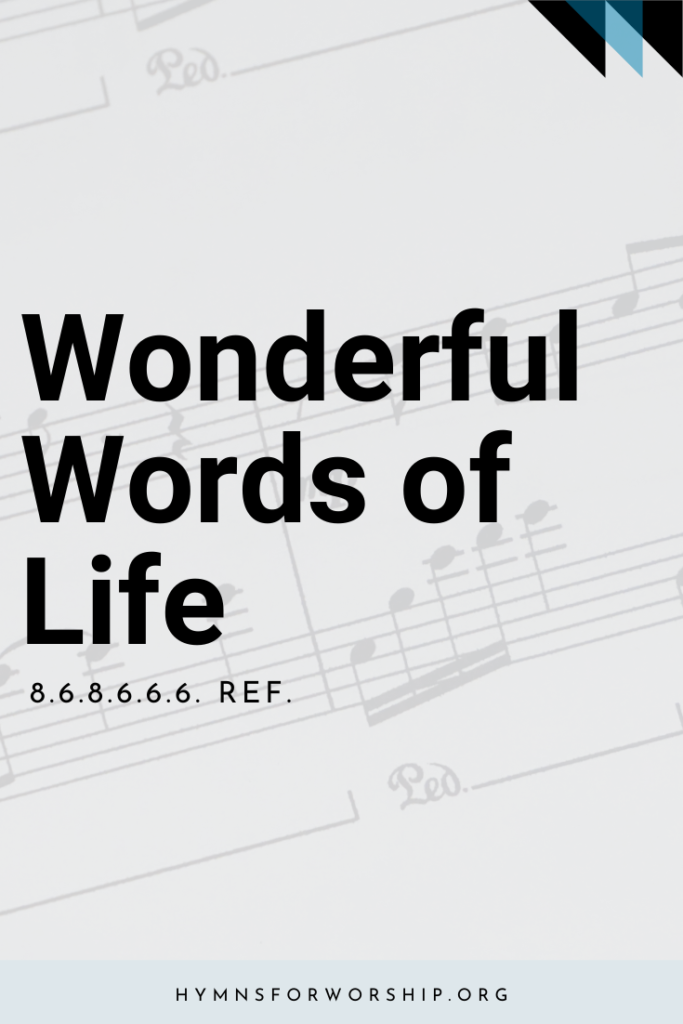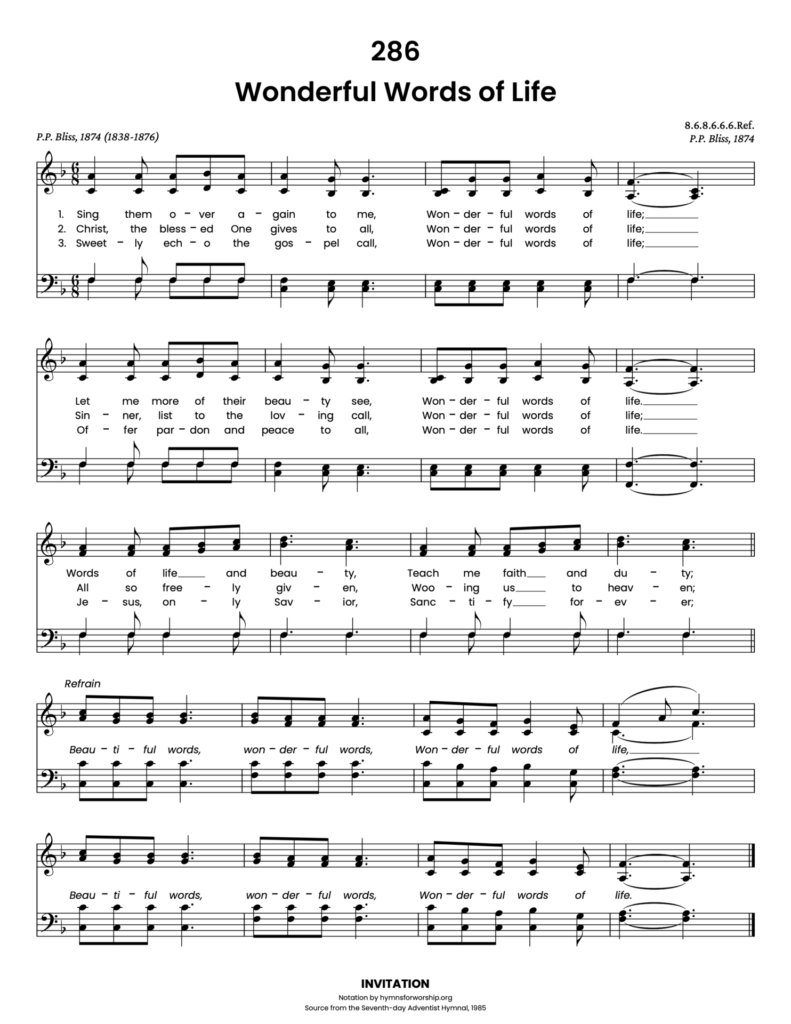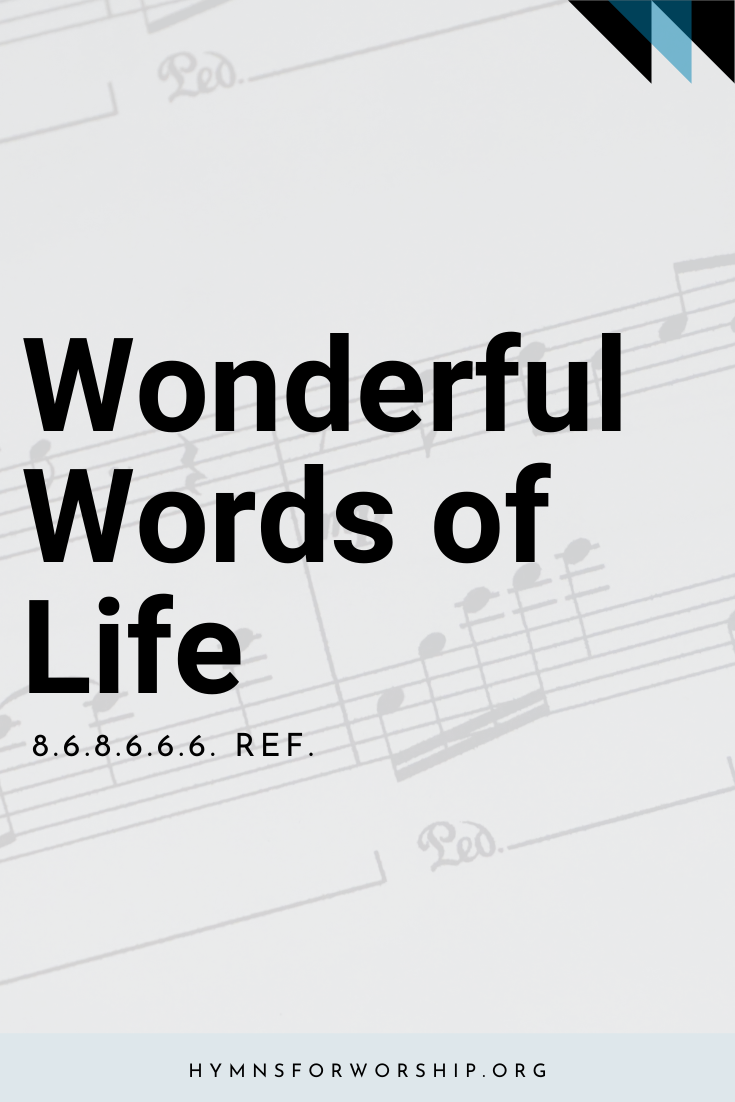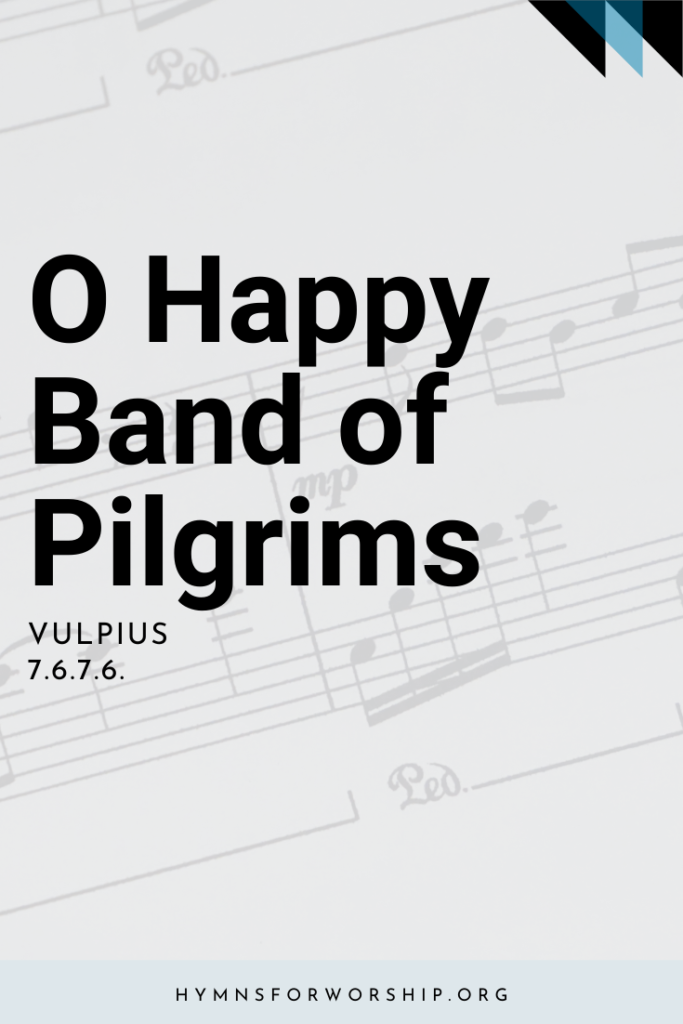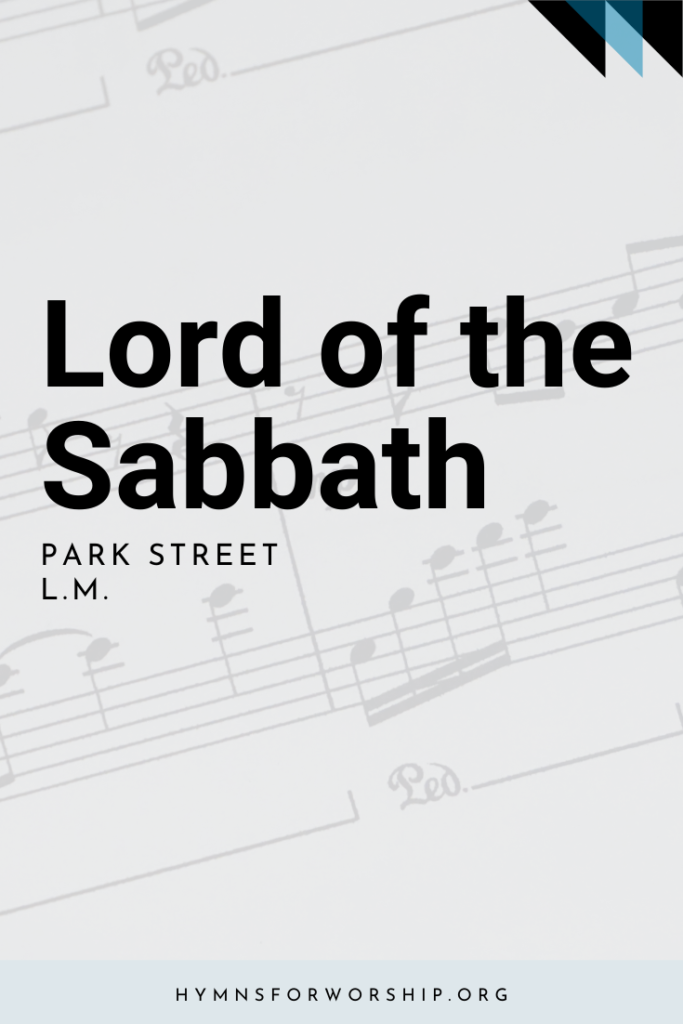Both words and music of this gospel song were composed in 1874 by Philip Bliss; it first appeared in Words of Life, 1874, a Sunday school paper in New York. The popularity of this music is no doubt a result of the singable melody in the soprano and the duet formed with the alto part, usually a third or sixth below.
Bliss was born in Clearfield County, Pennsylvania, on July 9, 1838, to religious and musical parents who lived in a log cabin. He saw and heard a piano for the first time when he was about 10, and was enthralled with the harmony of the sound. As a young lad he worked on farms and in lumber camps, and accepted Christ, joining the Baptist Church at age 12. After a winter of music study with J. G. Towner, father of D. B. Towner (see SDAH 109), and attendance at a convention at Rome, Pennsylvania, conducted by William B. Bradbury (see Biographies), he taught at Rome Academy. He boarded with and worked on the farm for O.F. Young, and at age 21 married Young’s daughter, Lucy. For several years Bliss taught music during the winter months and work on the farm in the summer. In 1864 he sent an original song to Root and Cady Music Publisher, Chicago, offering it to them if they would send him a flute. Recognizing a budding talent, they sent him the flute, and later gave him a job concertizing and holding conventions for the company. For four years he did this, and for four more years concertizing independently before joining with evangelist Major D. W. Whittle (see SDAH197) as soloist and song leader . They held revival meeting in Illinois, Michigan, Pennsylvania, and several Southern states, and all the time he was writing message- filled gospel songs.
After accepting an invitation to go to England for some meetings, he and Lucy went to Rome, Pennsylvania, and spent Christmas with his family. On December 29, 1876, they were on the trip back to Chicago where he was to sing in Moody’s tabernacle, when a bridge gave way; the train plunged into the icy river below and burst into flames. It was reported that Bliss survived the fall, got out through a window, then went back in to try to save Lucy. Both lost their lives in the flames. Among his publications for the Sunday school were The Charm, 1871, and Sunshine, 1873. With Ira D. Sankey he compiled Gospel Hymns and Sacred Songs, Nos. 1 and 2. He also compiled several collections with G. F. Root, who had this to say about Bliss: “If ever a man seemed fashioned by the divine hand for a special and exalted work, that man was P. P. Bliss. He had a splendid physique, a handsome face, and a dignified, striking presence. [His] voice was always a marvel to me. Beginning with a D-flat below [F-clef], he would, without apparent effort, produce a series of clarion tones, in an ascending series, until having reached G space above [C-clef] with pure tone.”
Bliss also wrote the music for SDAH 530, “It Is Well With My Soul,” and the words for SDAH 343, “I Will Sing of My Redeemer.”
